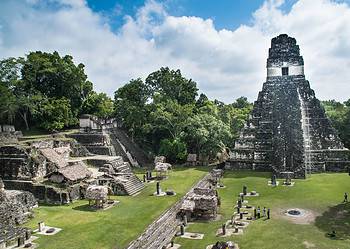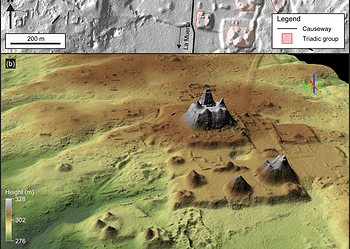Have you ever wondered why the impressive structures of the Mayan civilization still stand today after over 1,000 years? This may be why. A team of researchers analyzed samples of Maya plasters from an archaeological complex in Honduras and found they added plant extracts to improve the plaster’s performance, ensuring it lasted longer.

The use of lime plaster goes back to between 10,000 and 12,000 BC. It was originally manufactured through the calcination of carbonate rocks to produce quicklime, which was then slacked to create portlandite. It now seems the Maya developed their own lime, producing plasters, mortars and stuccos with high resistance to disintegration.
“We finally unveiled the secret of ancient Maya masons,” Carlos Rodríguez Navarro, a mineralogist at the University of Granada in Spain and the paper’s first author, told PopSci. Navarro and his colleagues published their work in the journal Science Advances after working on the Mayan city of Copan, with well-kept structures.
Unlocking the secret ingredient
Civilizations across the world discovered how to make plaster, which is mostly used to hold bricks together or to cover stone to give it an appealing look. But previous studies showed not all ancient plaster was the same – some were much more durable than others. Mayan plaster lasted much longer than plaster produced by the Aztecs, for example.
The researchers then took it a step further and decided to make their own historic plaster. They talked with Maya masons and descendants living in Copán, who suggested that they focus on two trees: the chukum and the jiote, both of which still grow in the area. More specifically, the researchers looked at the trees’ sap.
The researchers then took it a step further and decided to make their own historic plaster. They talked with Mayan masons and descendants living in Copán, who suggested them to focus on two trees: the chukum and the jiote, both of which still grow in the area. More specifically, the researchers looked at the trees’ sap.
They followed the usual formula to create plaster but also added sap into the mix. This toughened the material and also made plaster insoluble in water, which may explain why the Maya structures have lasted so long. The microscopic structure of the plaster is similar to calcite biominerals found in sea urchin spines and mollusc shells, they said.
“Our study helps to explain the improvement in the performance of lime mortars and plasters with natural organic additives developed not only by ancient Maya masons but also by other ancient civilizations,” the researchers wrote. “It paves the way for the design of novel biomimetic lime-based binders including natural or synthetic organics.”
Next, the researchers want to explore whether other civilizations that relied on masonry have also used the same recipe to make plaster. In ancient China, for example, people used sticky rice, a modern mainstay in Asian dishes, to produce plaster with more strength. This could one day lead to more durable construction materials.
The study was published in the journal Science.






